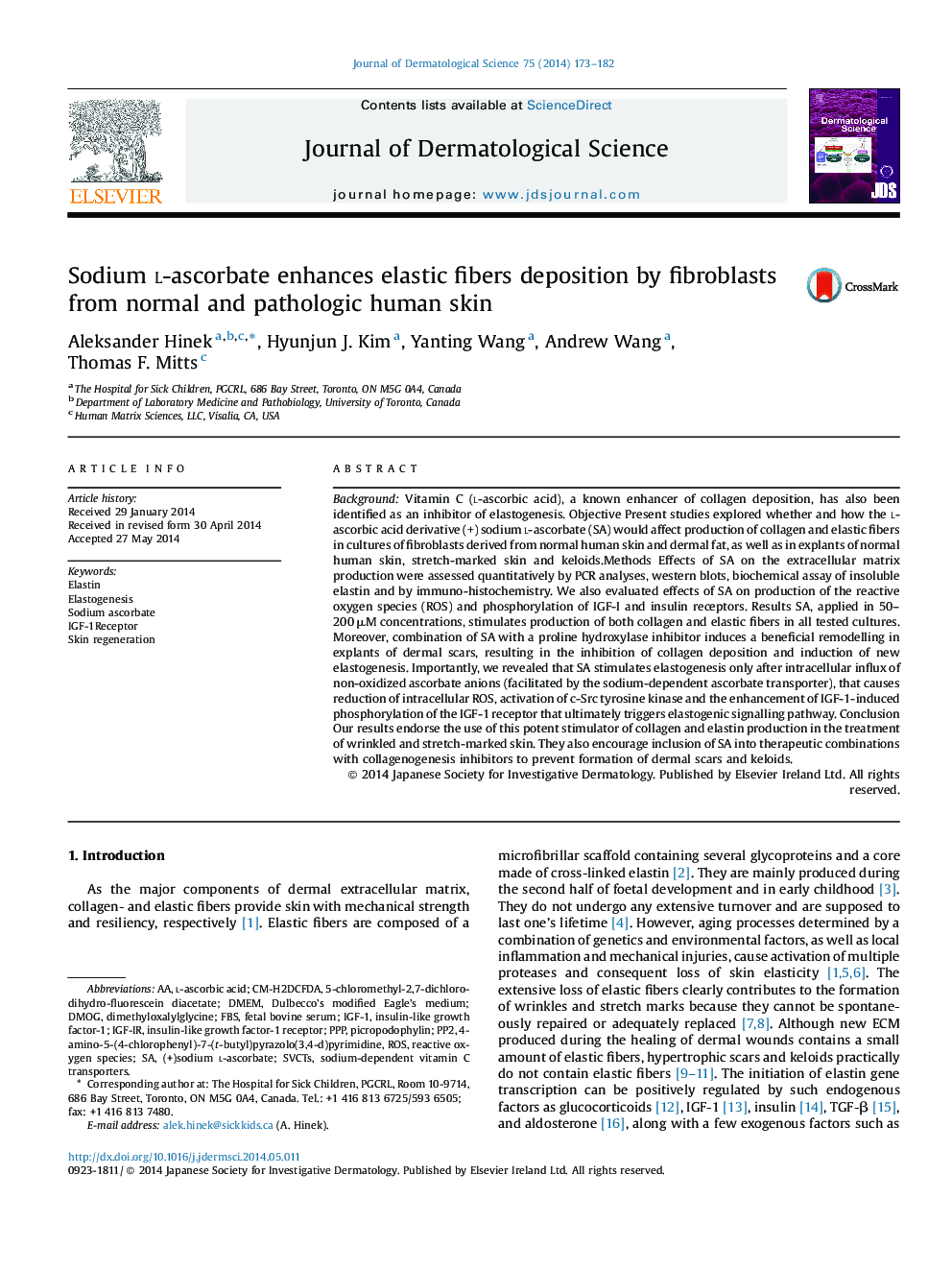| کد مقاله | کد نشریه | سال انتشار | مقاله انگلیسی | نسخه تمام متن |
|---|---|---|---|---|
| 3212673 | 1203191 | 2014 | 10 صفحه PDF | دانلود رایگان |
• Sodium l-ascorbate (SA) stimulates synthesis new elastin in skin fibroblasts.
• This effect of SA occurs only after its active intracellular transportation.
• Intracellularly, SA causes reduction of ROS and activation of IGF-1 receptor.
• Activation of IGF-1 receptor triggers pro-elastogenic signals.
• New elastin contributes to beneficial remodeling of stretch marks and keloids.
BackgroundVitamin C (l-ascorbic acid), a known enhancer of collagen deposition, has also been identified as an inhibitor of elastogenesis. Objective Present studies explored whether and how the l-ascorbic acid derivative (+) sodium l-ascorbate (SA) would affect production of collagen and elastic fibers in cultures of fibroblasts derived from normal human skin and dermal fat, as well as in explants of normal human skin, stretch-marked skin and keloids.Methods Effects of SA on the extracellular matrix production were assessed quantitatively by PCR analyses, western blots, biochemical assay of insoluble elastin and by immuno-histochemistry. We also evaluated effects of SA on production of the reactive oxygen species (ROS) and phosphorylation of IGF-I and insulin receptors. Results SA, applied in 50–200 μM concentrations, stimulates production of both collagen and elastic fibers in all tested cultures. Moreover, combination of SA with a proline hydroxylase inhibitor induces a beneficial remodelling in explants of dermal scars, resulting in the inhibition of collagen deposition and induction of new elastogenesis. Importantly, we revealed that SA stimulates elastogenesis only after intracellular influx of non-oxidized ascorbate anions (facilitated by the sodium-dependent ascorbate transporter), that causes reduction of intracellular ROS, activation of c-Src tyrosine kinase and the enhancement of IGF-1-induced phosphorylation of the IGF-1 receptor that ultimately triggers elastogenic signalling pathway. Conclusion Our results endorse the use of this potent stimulator of collagen and elastin production in the treatment of wrinkled and stretch-marked skin. They also encourage inclusion of SA into therapeutic combinations with collagenogenesis inhibitors to prevent formation of dermal scars and keloids.
Journal: Journal of Dermatological Science - Volume 75, Issue 3, September 2014, Pages 173–182
